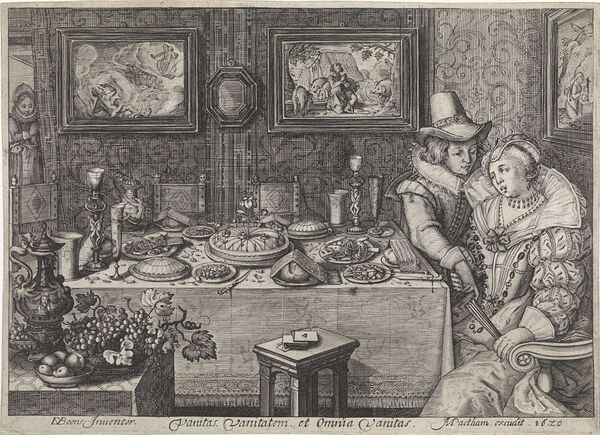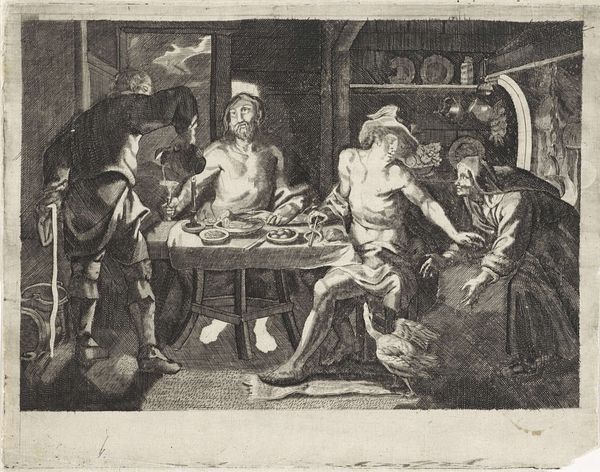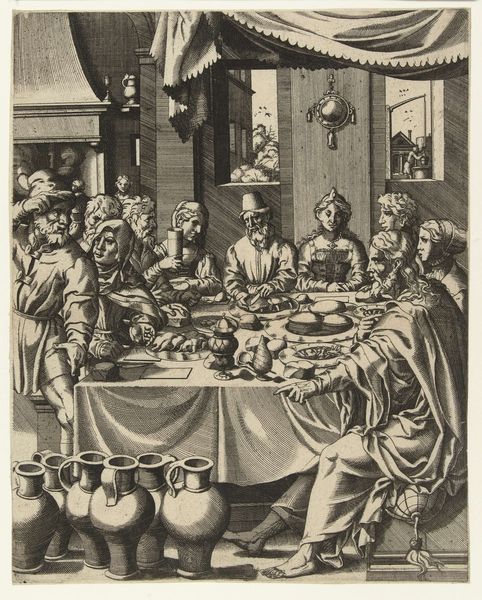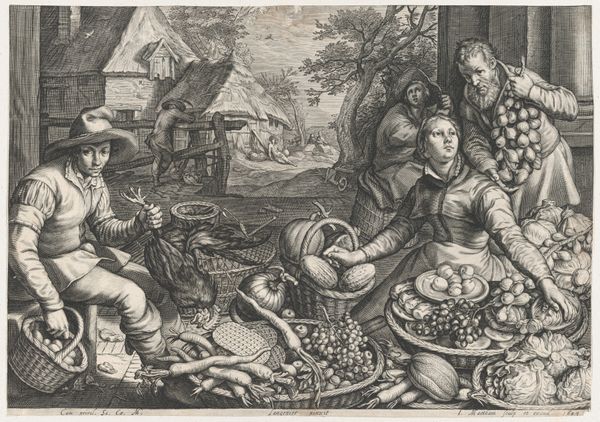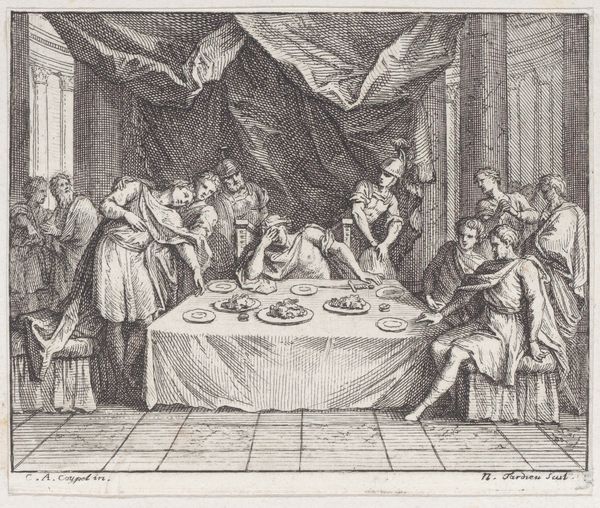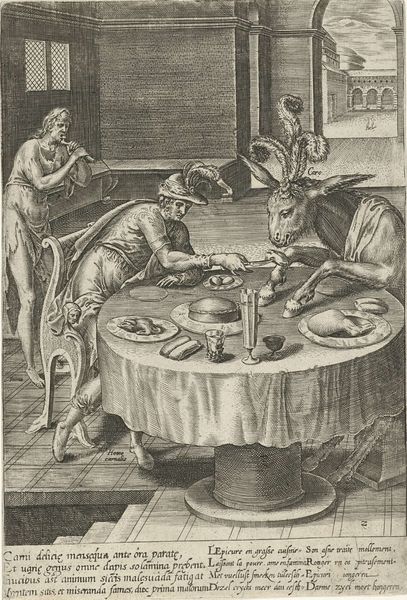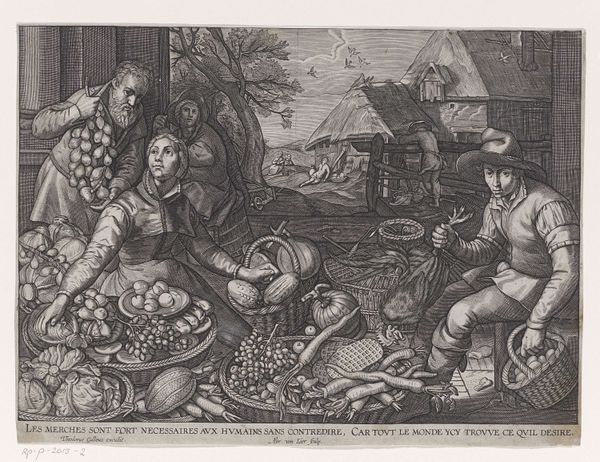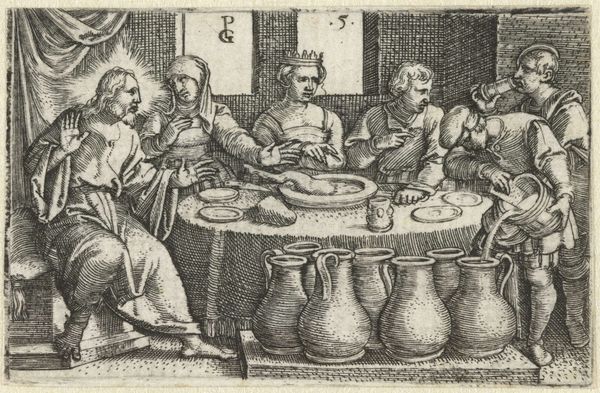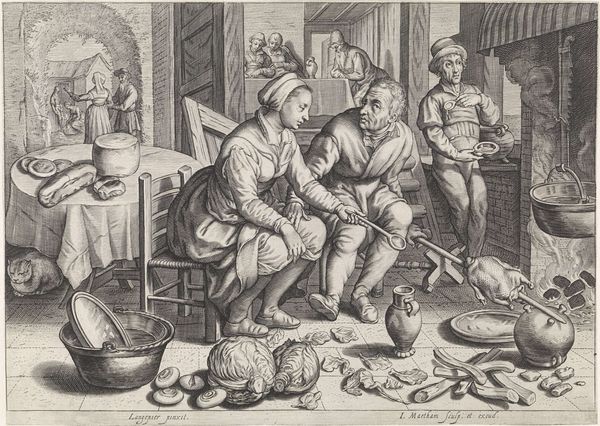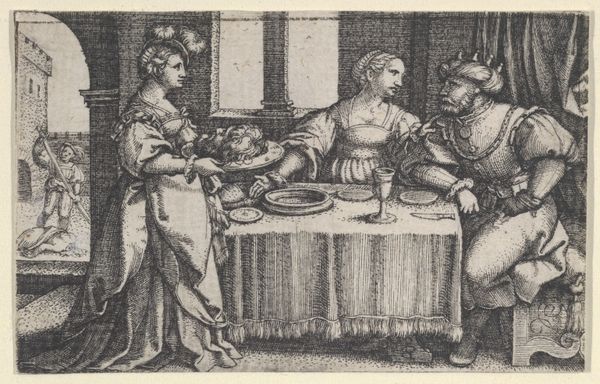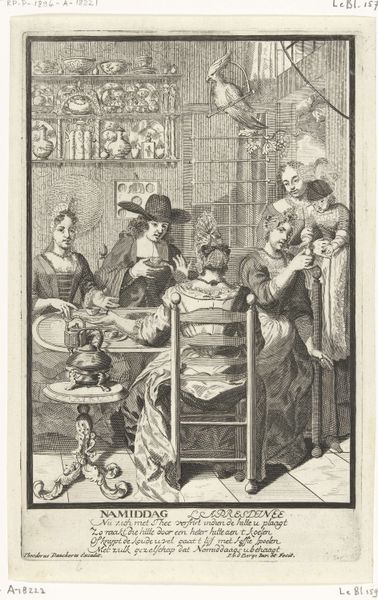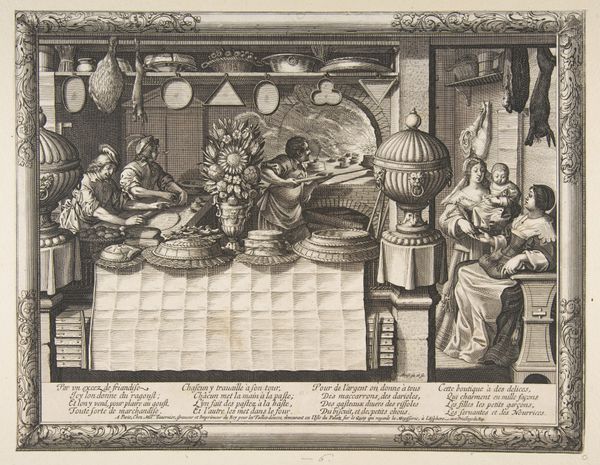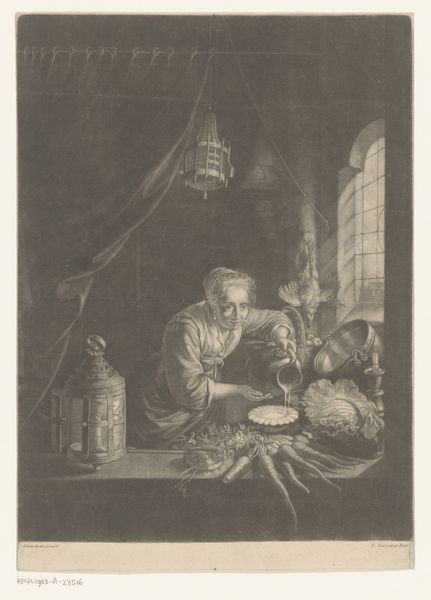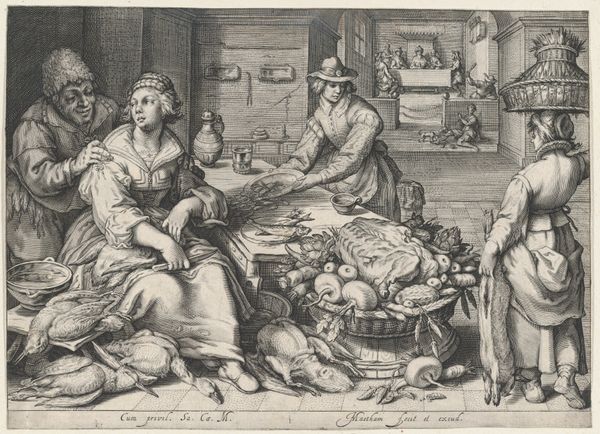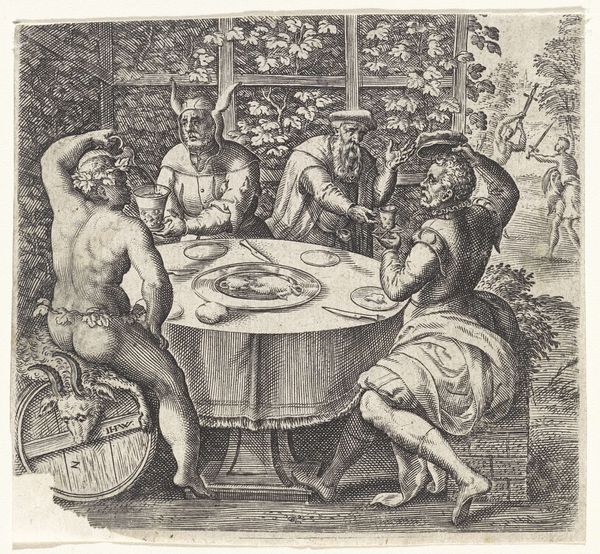
tempera, painting, oil-paint
#
food
#
baroque
#
tempera
#
pottery
#
dutch-golden-age
#
painting
#
oil-paint
#
geometric
Copyright: Public domain
Curator: Standing before us is Osias Beert's "Still Life with Oysters and Pastries," painted around 1610, crafted with tempera and oil paint. Editor: Immediately striking is the abundance. So many objects vying for attention, the geometric arrangements versus the biomorphic curves of fruit... there’s an almost oppressive feeling from this indulgence. Curator: Indeed, still lifes of this period weren't simply about depicting food. Oysters, for instance, often symbolize love and sensuality but can also carry the weight of vanity or earthly pleasures, being a costly luxury. Consider the pastries too – their intricate geometric decoration represents cultivated artistry and a celebration of skill, don’t you agree? Editor: Yes, but also that constructed symmetry feels artificial to me, as though life and wealth are neatly packaged, avoiding decay. The oysters appear fresher, more organic, next to these calculated sweets. Look at the almost forensic detail applied to each object’s texture – light catching on the silver, the glistening shells... It speaks to an intense observational skill. Curator: The dark background, typical of Baroque painting, emphasizes the light falling upon each item, highlighting a worldview that's emerging: that objects of the world are increasingly visible, known, and conquerable through knowledge. Food, the life-sustaining substance, becomes more than just that—it signifies human endeavor, consumption, and, possibly, excess. It also embodies cultural memory as pastries are passed between generations and signify family unity. Editor: Agreed. But consider how that darkness pushes everything forward. This isn’t a window onto a scene; the still life thrusts itself towards the viewer, demanding scrutiny of its forms. It's not merely an allegory; the materials are central—their gloss, their tactile nature…they ask to be touched and tasted. It really exemplifies a sensual celebration that’s hard to ignore. Curator: True. This still life, with all its finery and perhaps implied excesses, offers an insight into not only material culture of 17th century Flanders but into the perennial themes of human appetite and meaning, something that continues to engage us today. Editor: And from a formal perspective, Beert showcases his meticulous craftsmanship by building textures, light, and composition. It offers endless opportunities for close visual inspection, to savor it slowly as one would these sumptuous pastries.
Comments
No comments
Be the first to comment and join the conversation on the ultimate creative platform.
